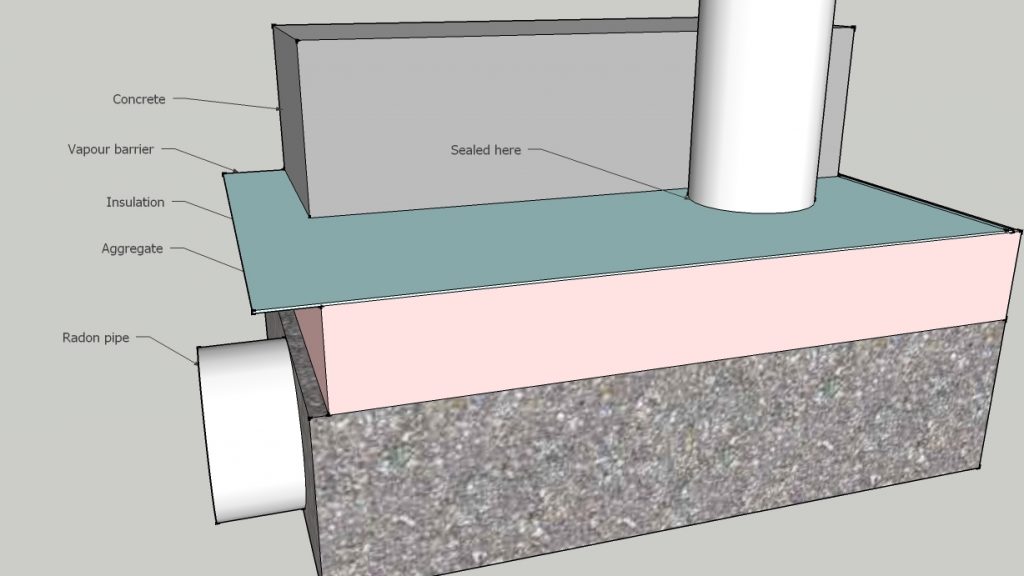How Can We Help?
Radon pipe
Almost every concrete slab that isn't used for storage requires a section of 4" pipe that penetrates the slab, called a "soil gas extraction pipe," or a "radon pipe."
Here’s why you need one (apart from the fact that it’s mandated by Code): one of the major threats to home safety is radon gas, which is a byproduct of uranium decay. Uranium is not as uncommon as one might think, and in some parts of our region (Utopia and Manners Sutton) – there’s enough uranium in the bedrock to contaminate well water. Radon (as well as other gases) will percolate upwards through the soil, and can even move through the concrete of a basement floor.
Code requires that all slabs-on-ground in occupied uses (residential, commercial) have a vapour barrier separating the ground from the concrete. It also requires that a 4” pipe penetrate that vapour barrier, and rest at some point near the middle of the slab. If your home ever tests positive for radon or some other soil gas, it’s a simple thing to attach a fan to vent those gases through the pipe and to the grand outdoors: which is far cheaper than digging up a basement floor.
While the inlet of the pipe should be near the middle of the slab, it can emerge through the slab at any point. It is common for radon pipes to be routed near an outside wall.
Shown here are two common ways to do this. One is to route the pipe some distance under the concrete before bringing it through the slab; the other is to simply have a length of pipe penetrate directly under the concrete somewhere near the centre of the slab.

The key principle is that the end of the pipe is in the aggregate below insulation (if required) and vapour barrier. It must be sealed at the penetration - that is, around the vapour barrier.
When done, the pipe should be capped and labelled "Radon" to avoid confusion with plumbing penetrations. Most often, the pipe will be white in colour: since white pipes are not used in interior plumbing, this helps ensure there is no confusion between the radon pipe and part of the building's plumbing system.
It should be noted that for residential concrete slabs the Utopia and Manners Sutton area, our office will require an inspection prior to the pouring of concrete to verify the correct installation of a radon pipe. This is due to the higher incidence of uranium in these areas, and thus the greater likelihood of radon.
Questions? Our inspection staff can assist. Call us at 466-7369.
